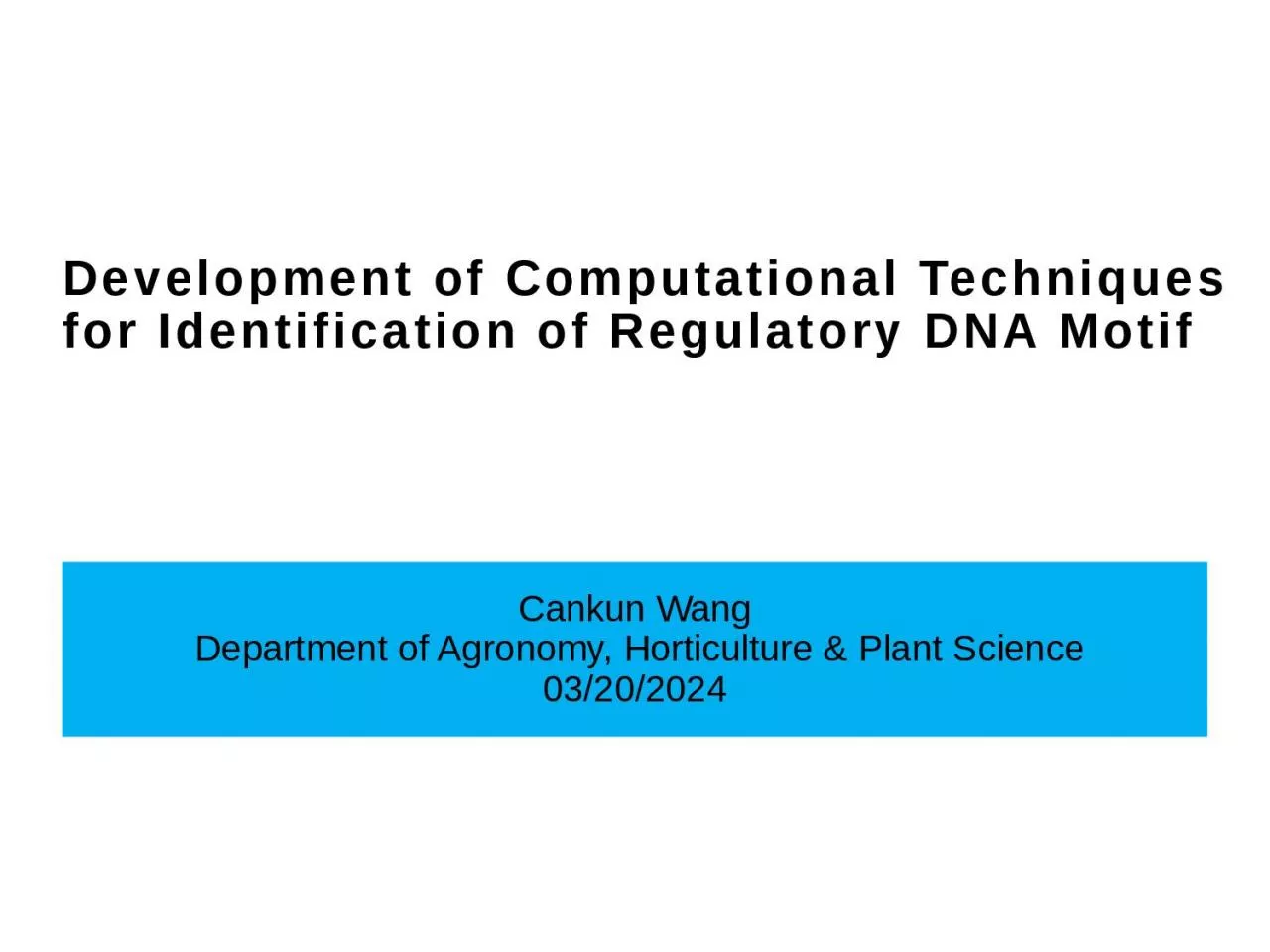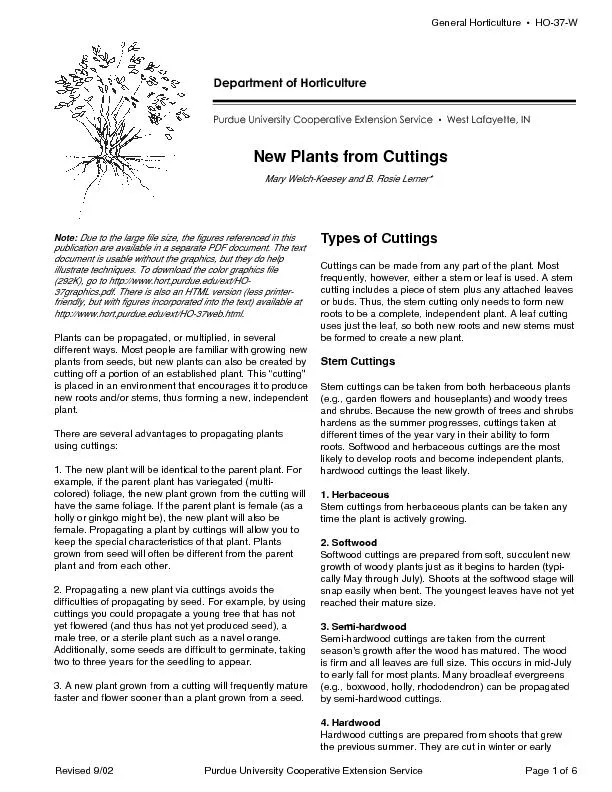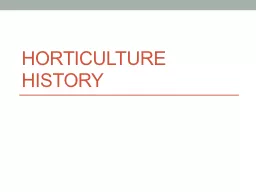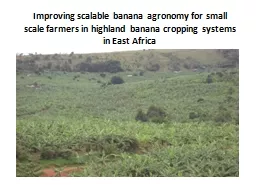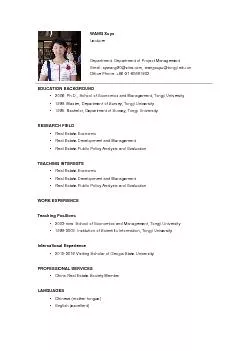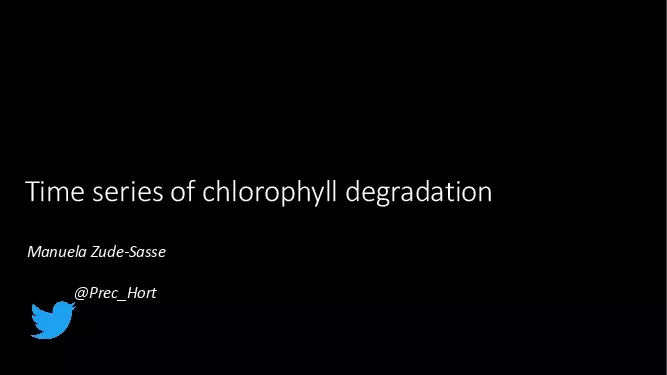PPT-Cankun Wang Department of Agronomy, Horticulture & Plant Science
Author : jacey | Published Date : 2024-02-09
7172019 Development of Computational Techniques for Identification of Regulatory DNA Motif Outline Introduction WTSA a novel DNA motif identification program
Presentation Embed Code
Download Presentation
Download Presentation The PPT/PDF document "Cankun Wang Department of Agronomy, Hor..." is the property of its rightful owner. Permission is granted to download and print the materials on this website for personal, non-commercial use only, and to display it on your personal computer provided you do not modify the materials and that you retain all copyright notices contained in the materials. By downloading content from our website, you accept the terms of this agreement.
Cankun Wang Department of Agronomy, Horticulture & Plant Science: Transcript
Download Rules Of Document
"Cankun Wang Department of Agronomy, Horticulture & Plant Science"The content belongs to its owner. You may download and print it for personal use, without modification, and keep all copyright notices. By downloading, you agree to these terms.
Related Documents

